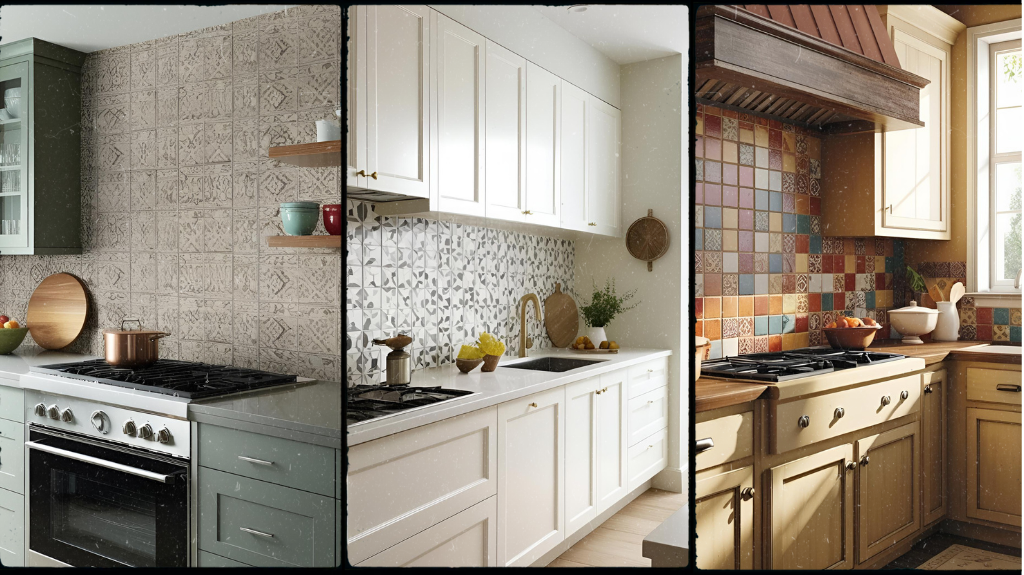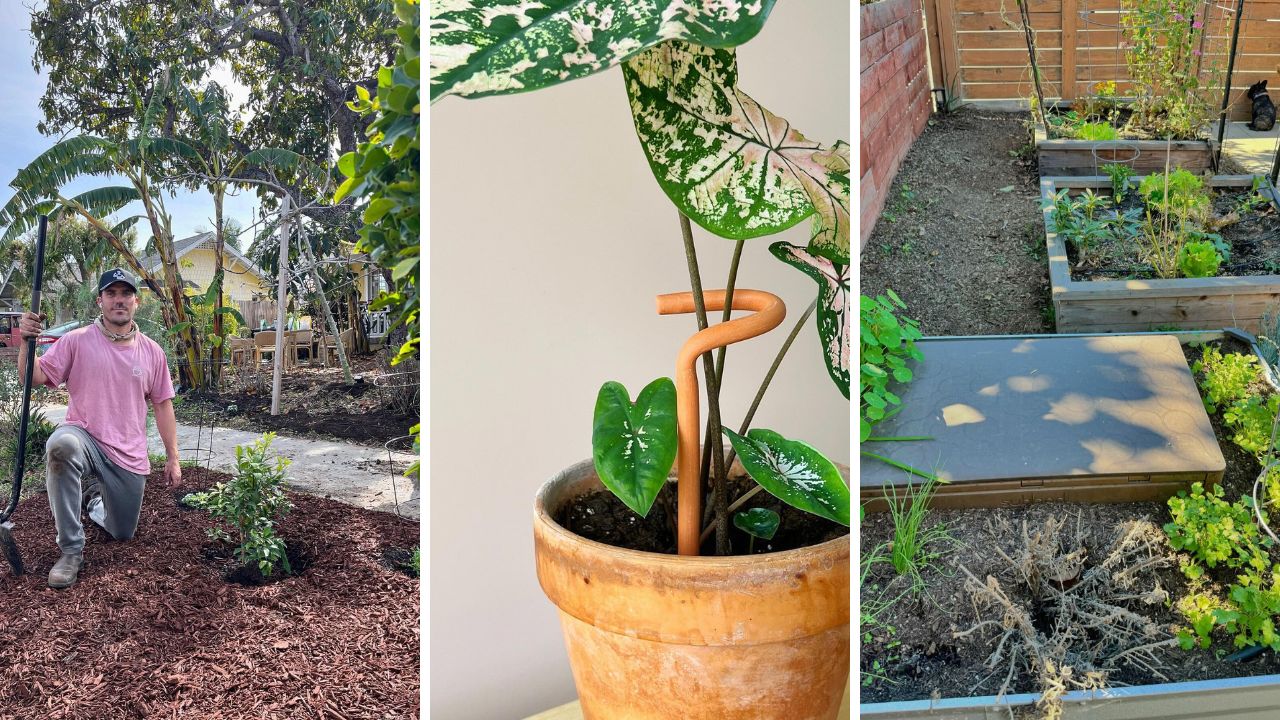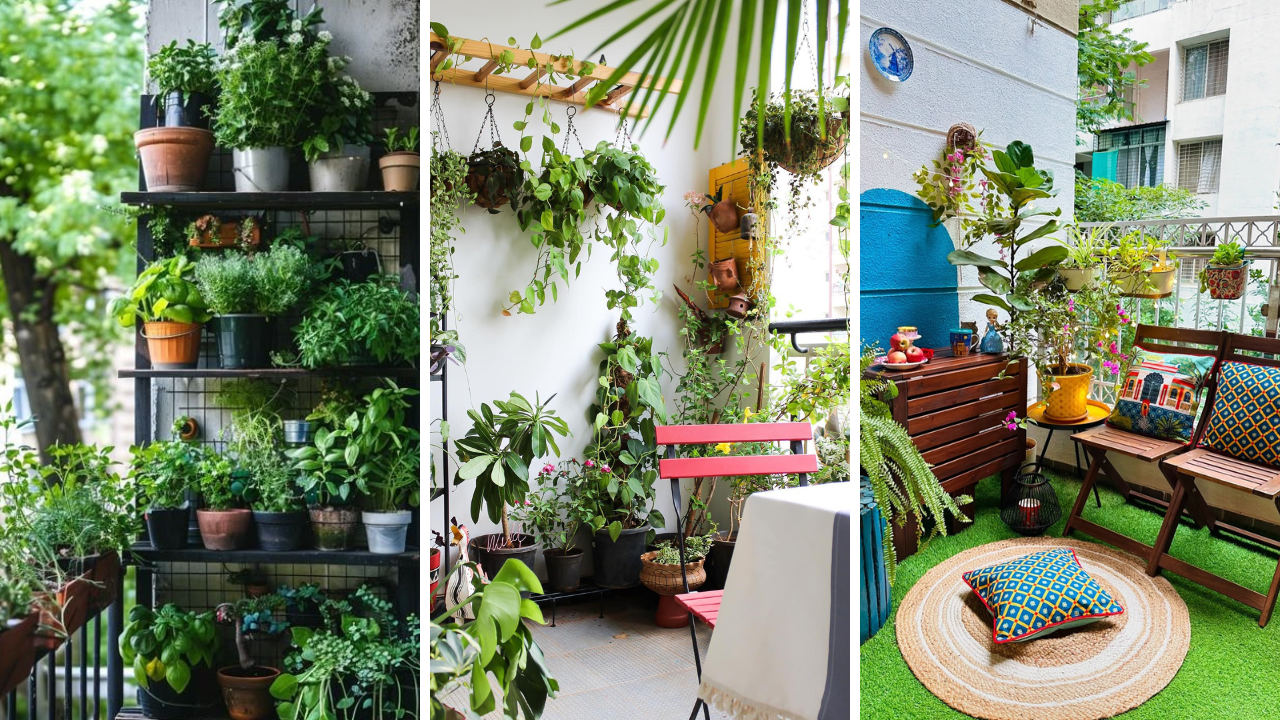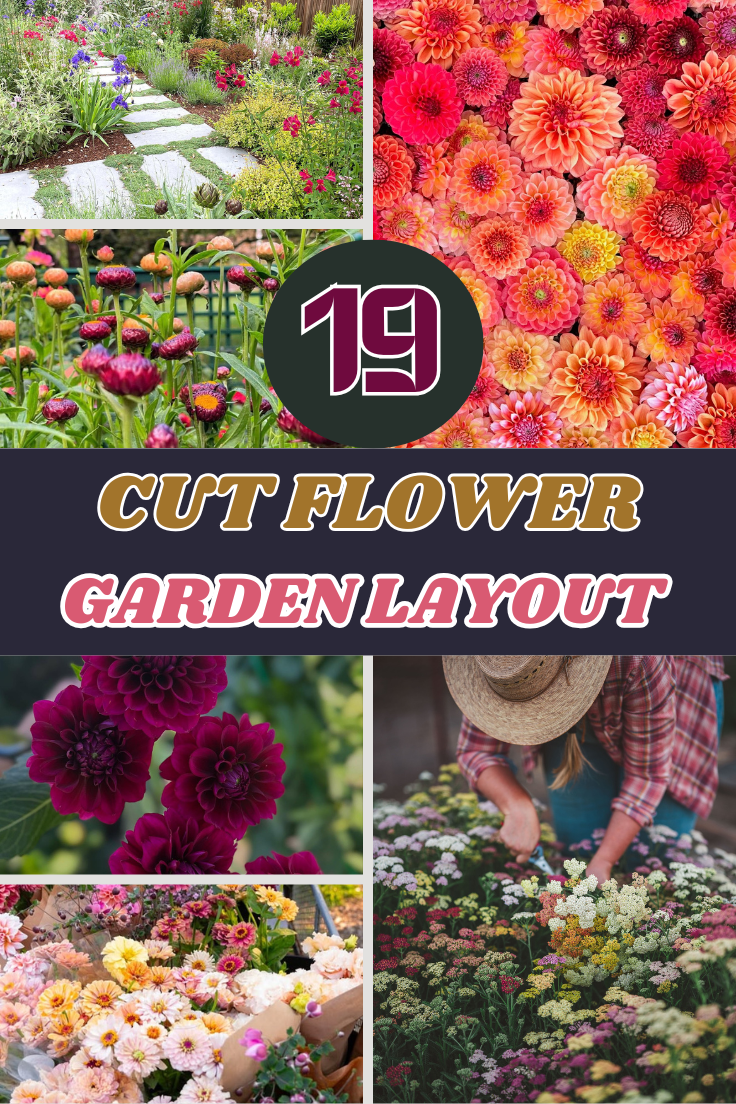
Creating a stunning cut flower garden is one of the most fulfilling ways to elevate your outdoor space. Picture stepping into your yard to pick a bouquet of vibrant flowers for your home, surrounded by a rainbow of colors, textures, and fragrances. For many, the joy of growing flowers goes beyond just visual appeal—it’s about the ability to cultivate something that can be cut and brought inside to brighten your living room. Whether you’re an expert gardener or just getting started, the secret to a successful cut flower garden lies in the layout. A thoughtful and strategic garden design can maximize the beauty, health, and productivity of your flowers while ensuring that your yard stays organized and easy to maintain. In this post, we’ll explore 19 effective layout hacks that will help you turn your garden into a beautiful and bountiful oasis. These ideas will guide you in arranging your flowers, choosing the best location, and selecting plants that are easy to grow and harvest for those perfect, fresh-cut blooms.
1. Choose the Right Location for Your Garden
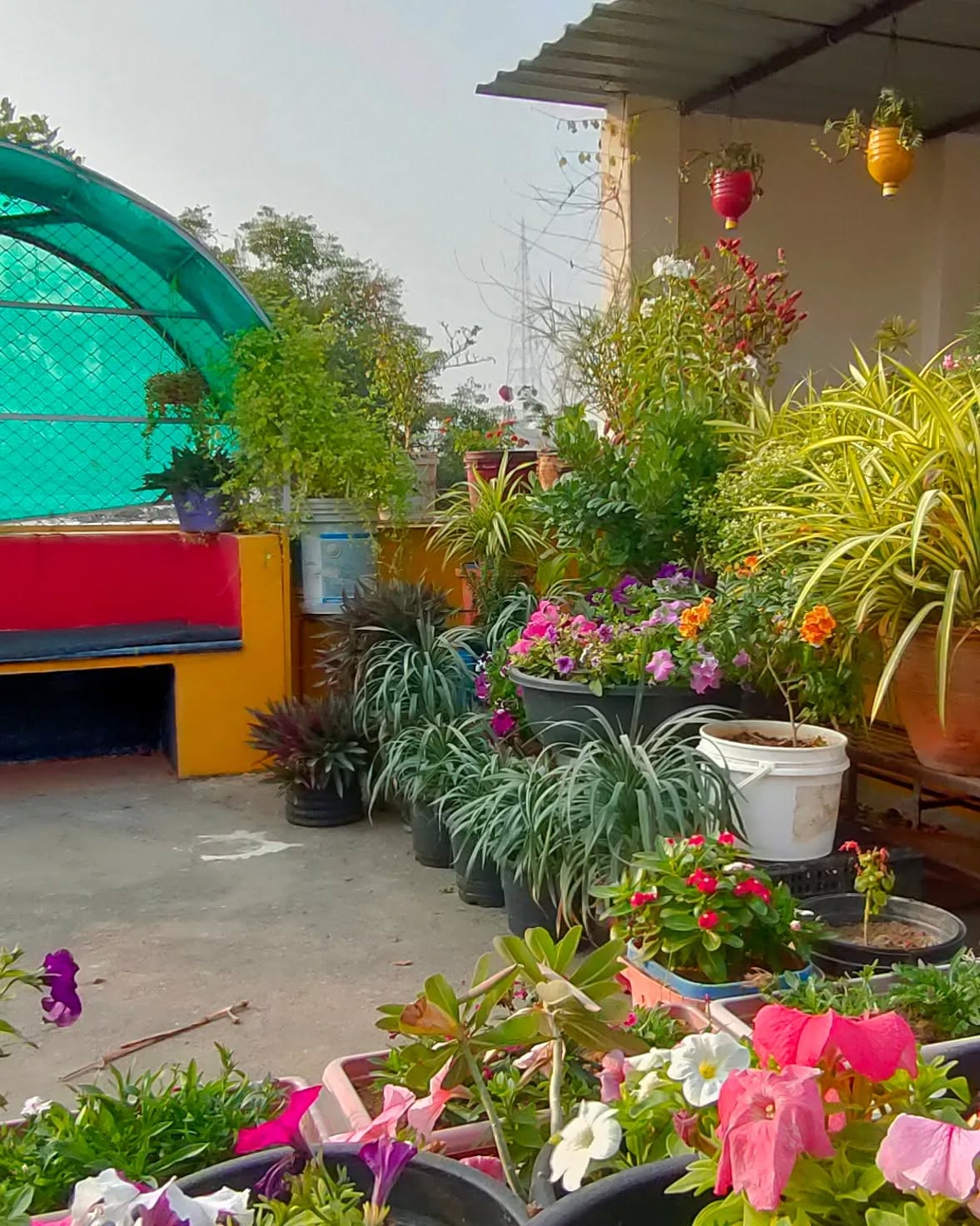
source@gardening_by_akmal
When it comes to creating a flourishing cut flower garden, location is key. Flowers thrive with access to full sunlight, so choosing a spot that gets at least 6 hours of direct sun every day will ensure your blooms are robust and vibrant. Whether you have a small backyard, a patio, or even a community garden plot, make sure the area you select offers enough sunlight. Additionally, the location should be well-drained. Avoid low-lying areas where water may collect after a rainfall, as this can lead to root rot. If your garden area doesn’t get the full 6 hours of sun, opt for flowers that tolerate partial shade, such as peonies or bleeding hearts. A well-placed garden, where sunlight and soil conditions align with the needs of your flowers, will ensure your cut flowers grow to their full potential and provide you with beautiful blooms all season long.
2. Create a Raised Garden Bed for Better Drainage
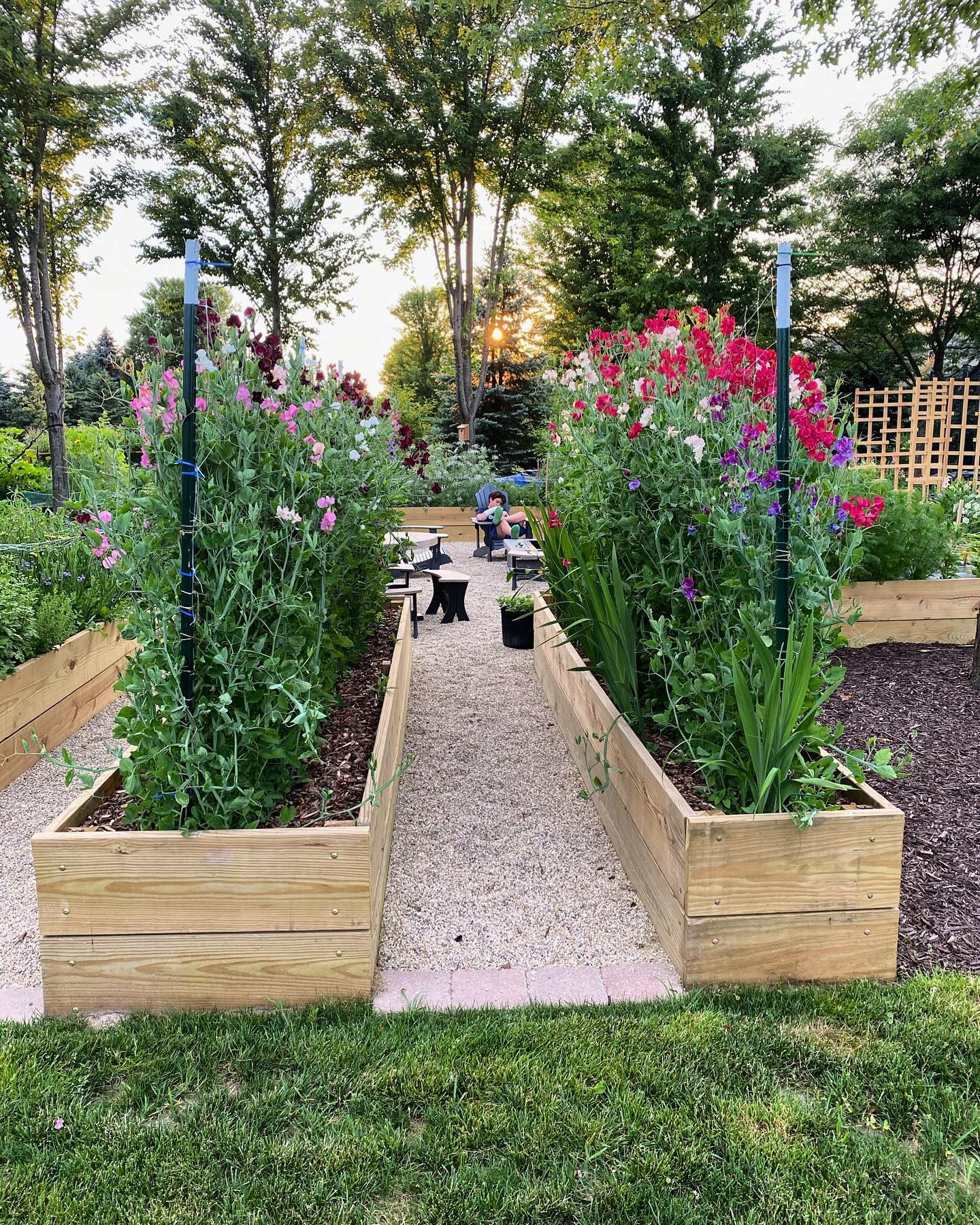
source@newmorningblooms
If your soil tends to hold onto water or has poor drainage, consider building a raised garden bed. Raised beds not only provide better drainage but also keep the roots of your flowers from sitting in water, which can cause them to rot. They also warm up faster in the spring, giving your plants a jump-start when the weather turns. Raised beds are perfect for growing cut flowers like zinnias, sunflowers, and dahlias, as they help ensure that your flowers’ roots get the proper amount of air and water. Plus, raised beds offer easy access for maintenance and harvesting, especially if you have mobility issues or want to avoid bending over to tend to your flowers. You can build a raised garden bed from wood, stone, or even metal, creating a sleek, defined edge that adds to the aesthetic appeal of your garden.
3. Plant Flowers in Rows for Easy Harvesting
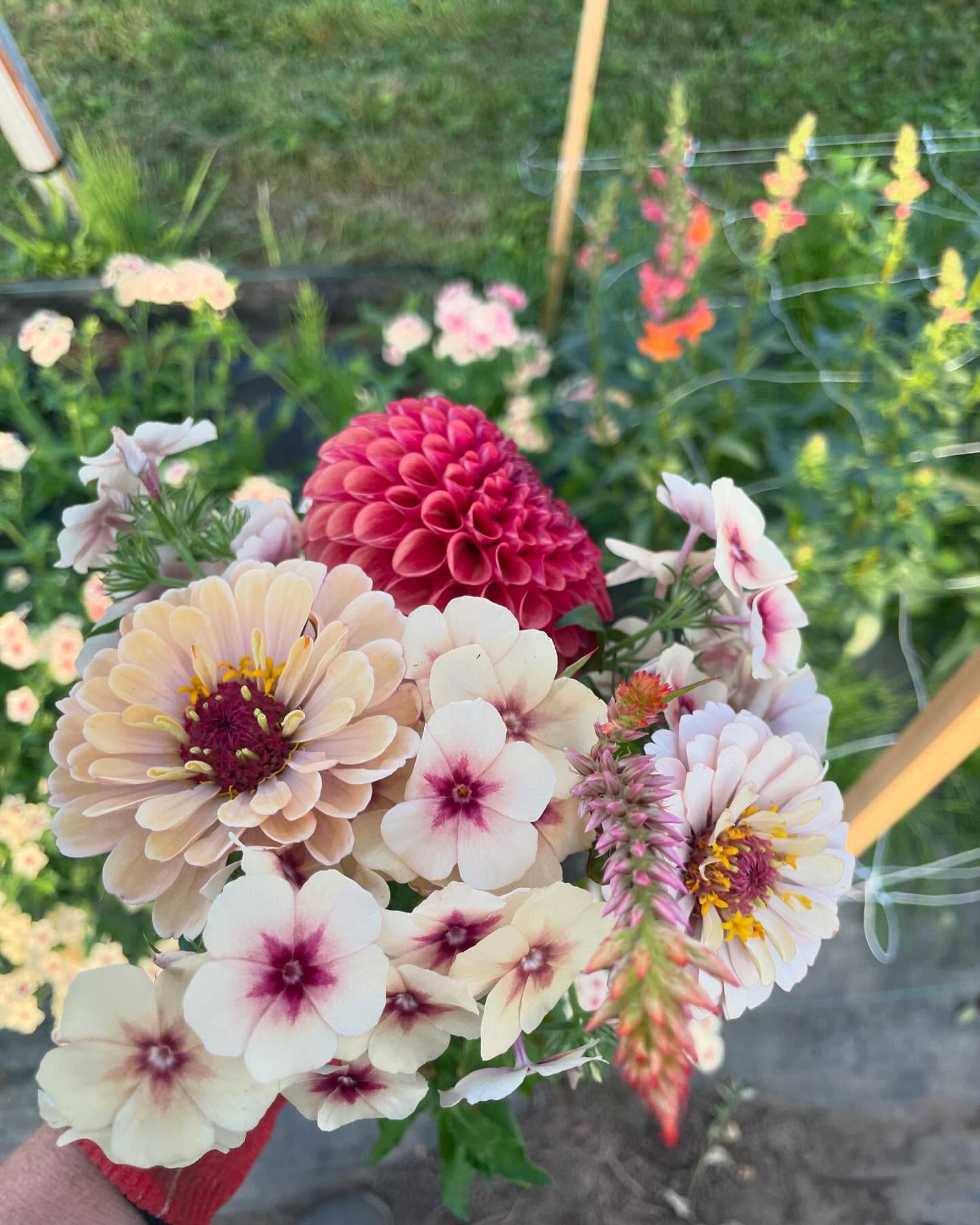
source@rubysflowercart
One of the simplest and most efficient ways to lay out a cut flower garden is by planting flowers in neat, organized rows. Planting in rows provides a clean, symmetrical appearance while allowing you easy access to each flower for cutting. Rows can also help keep plants from crowding each other, ensuring that each flower has room to grow and flourish. This method works especially well for flowers like tulips, lilies, and snapdragons, which grow tall and have long stems perfect for cutting. By spacing your flowers in rows, you’ll find it easier to walk through the garden without damaging the plants and can quickly spot any flowers that are ready for harvest. Rows are an ideal layout for those who appreciate both function and aesthetics, offering structure and simplicity for your garden design.
4. Incorporate Vertical Gardening
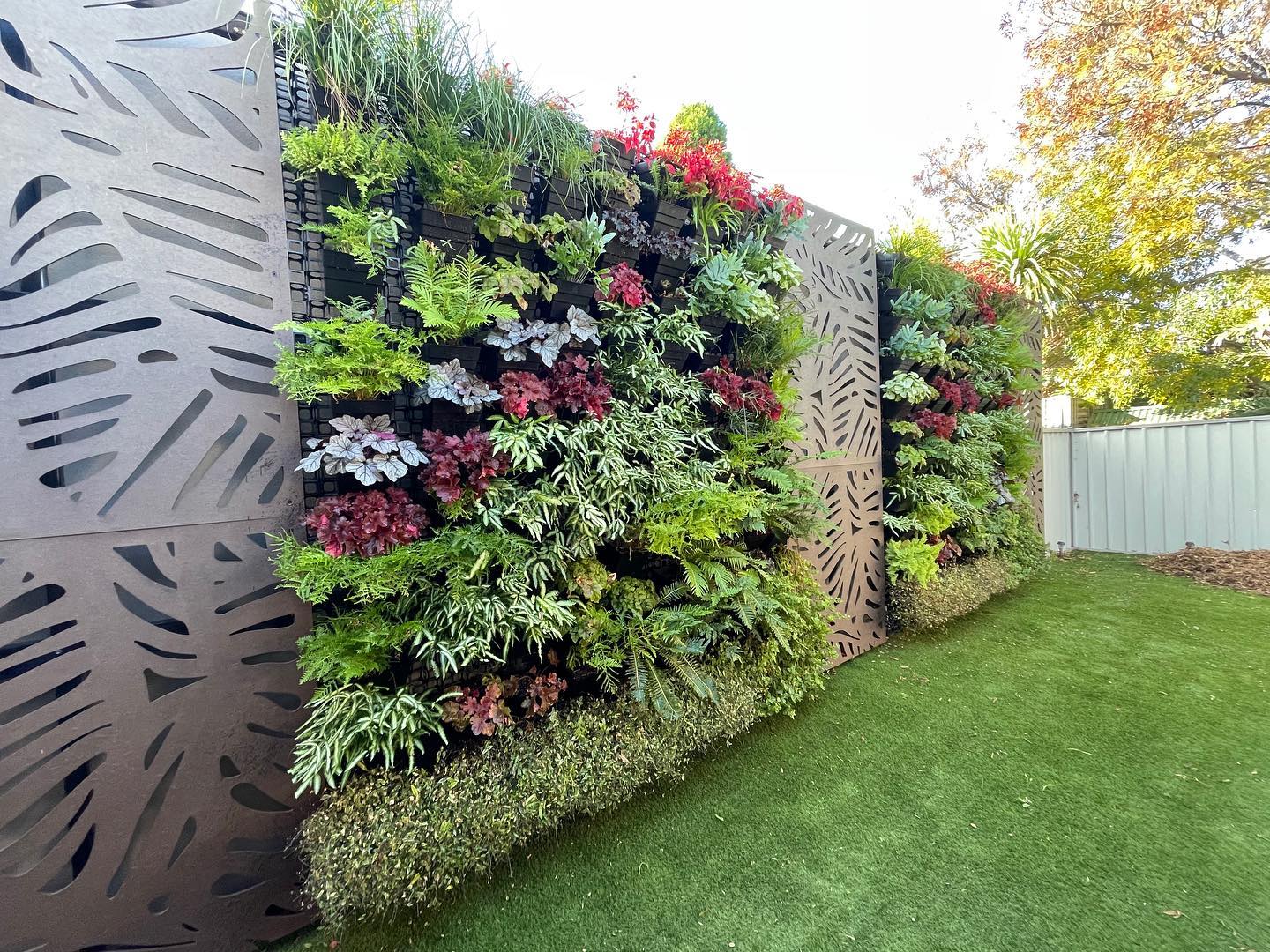
source@verticalgardensaustralia
If you’re working with limited space, vertical gardening is a fantastic way to make the most of your yard. By installing trellises, arbors, or tall garden structures, you can grow climbing flowers like sweet peas, morning glories, and clematis without taking up precious ground space. Vertical gardening allows you to take advantage of upward growth, creating a beautiful and dynamic display that will transform your garden into a vertical paradise. Adding height to your garden with climbing flowers also creates a sense of depth and dimension, especially in smaller yards. Not only do these vertical elements help conserve space, but they also encourage your flowers to grow in a way that maximizes sunlight exposure and airflow, contributing to healthier, more vibrant blooms.
5. Mix Perennials with Annuals
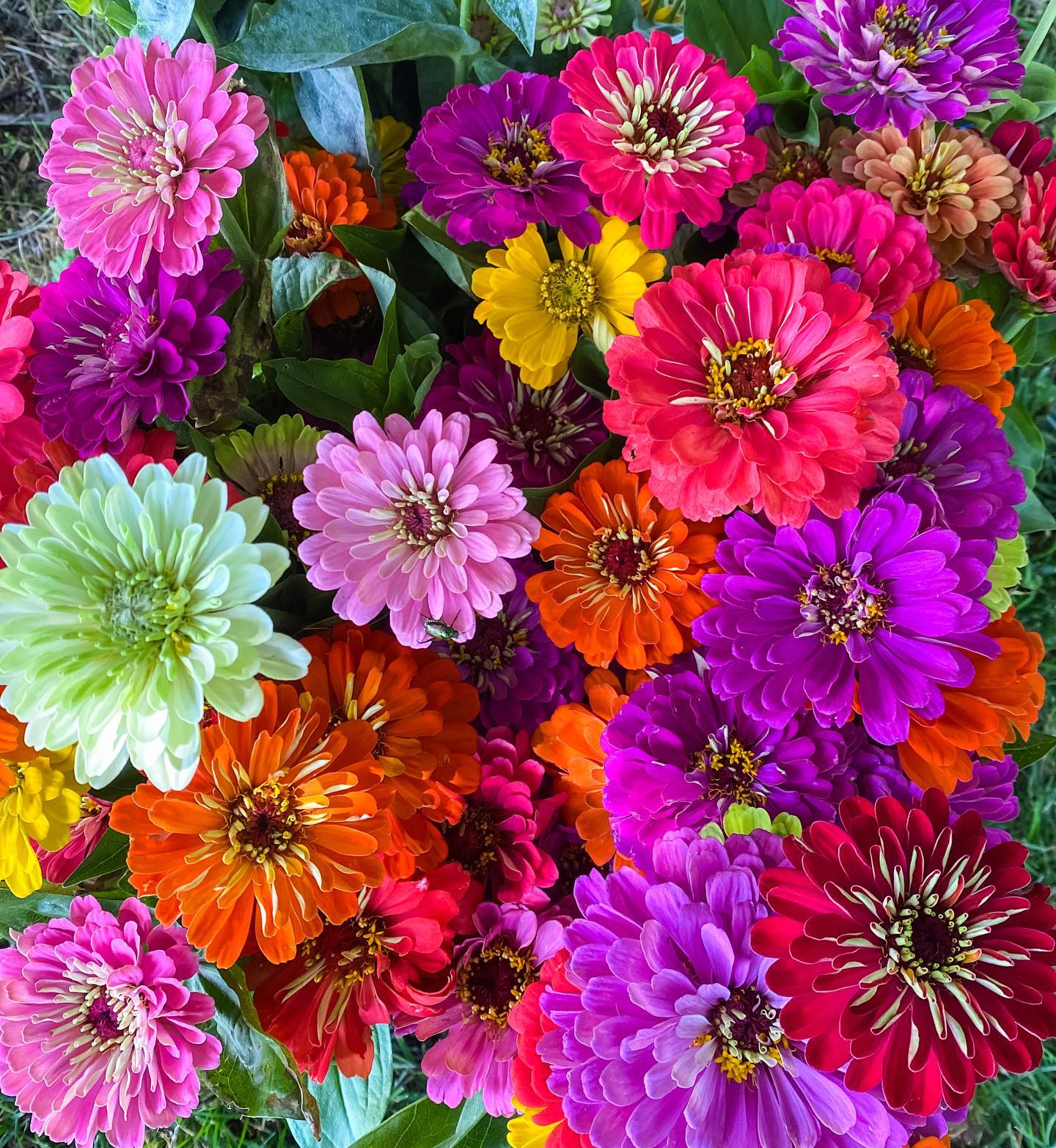
source@harmonyhrvst
A well-rounded cut flower garden should include both perennials and annuals. Perennials are flowers that come back year after year, providing a consistent base of color and texture, while annuals only bloom for a single season but often offer a wider range of colors and sizes. Mixing the two types ensures that your garden stays vibrant year-round. Perennials like peonies, daylilies, and lavender will provide you with dependable flowers, while annuals such as marigolds, cosmos, and zinnias can add bursts of color throughout the season. Combining these two types of flowers creates a balanced, diverse garden that’s visually interesting and constantly changing, which means you’ll have fresh-cut flowers to arrange all year long.
6. Design with Color Zones
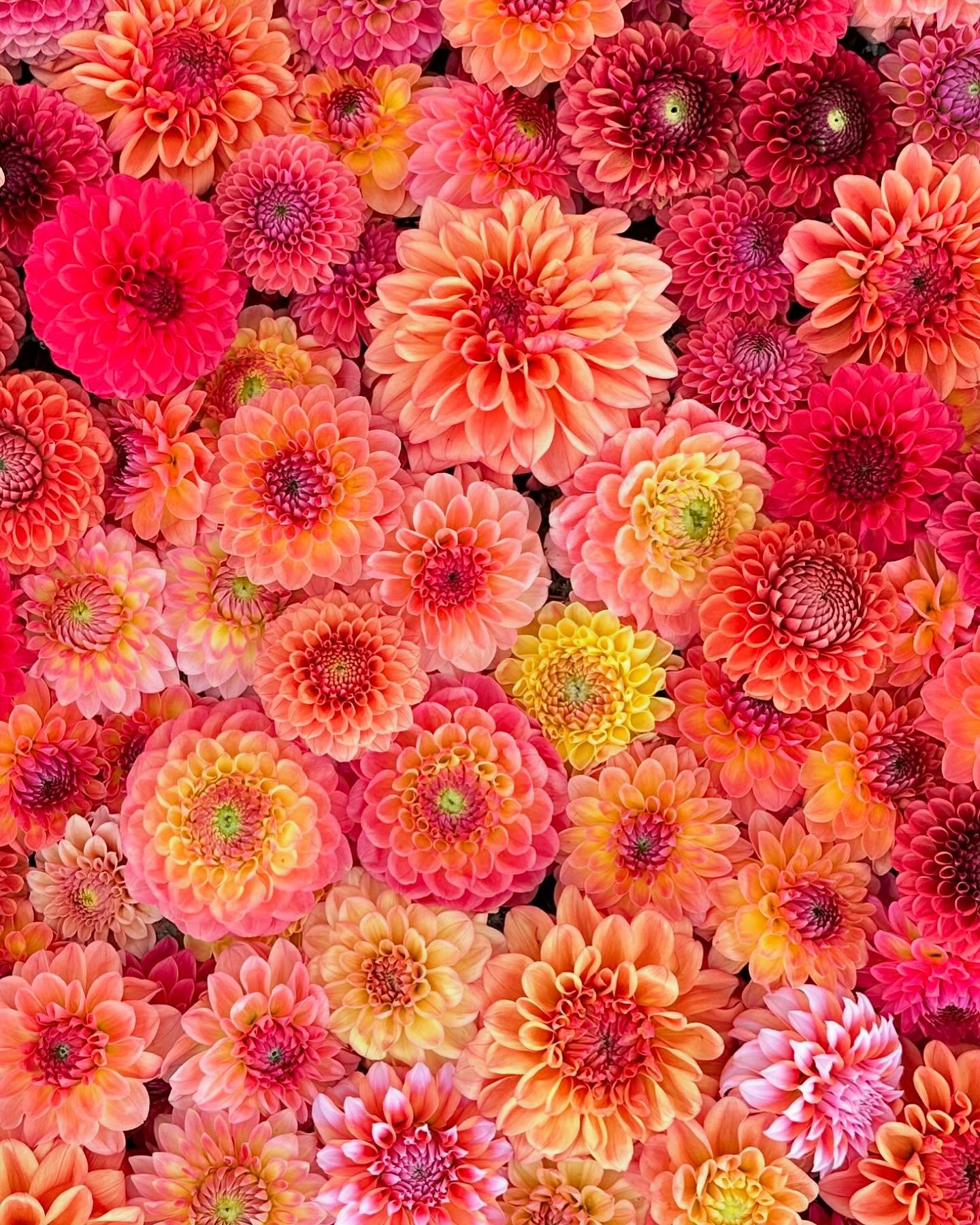
source@sarahscutflowers
One of the most striking elements of a cut flower garden is the use of color. A great way to enhance the visual appeal of your garden is by grouping flowers into color zones. You could create an all-yellow zone with sunflowers, black-eyed Susans, and daffodils, or opt for a purple zone with lavender, violets, and tulips. Grouping flowers by color not only creates a cohesive look but also allows you to play with color combinations when arranging cut flowers. Color zones can be as bold or as subtle as you like, and they offer endless possibilities for creativity. Whether you go for contrasting colors like red and yellow or soothing tones like pastel pinks and whites, designing your flower garden with color zones ensures that every section of your garden is eye-catching and visually cohesive.
7. Use Companion Planting to Enhance Growth
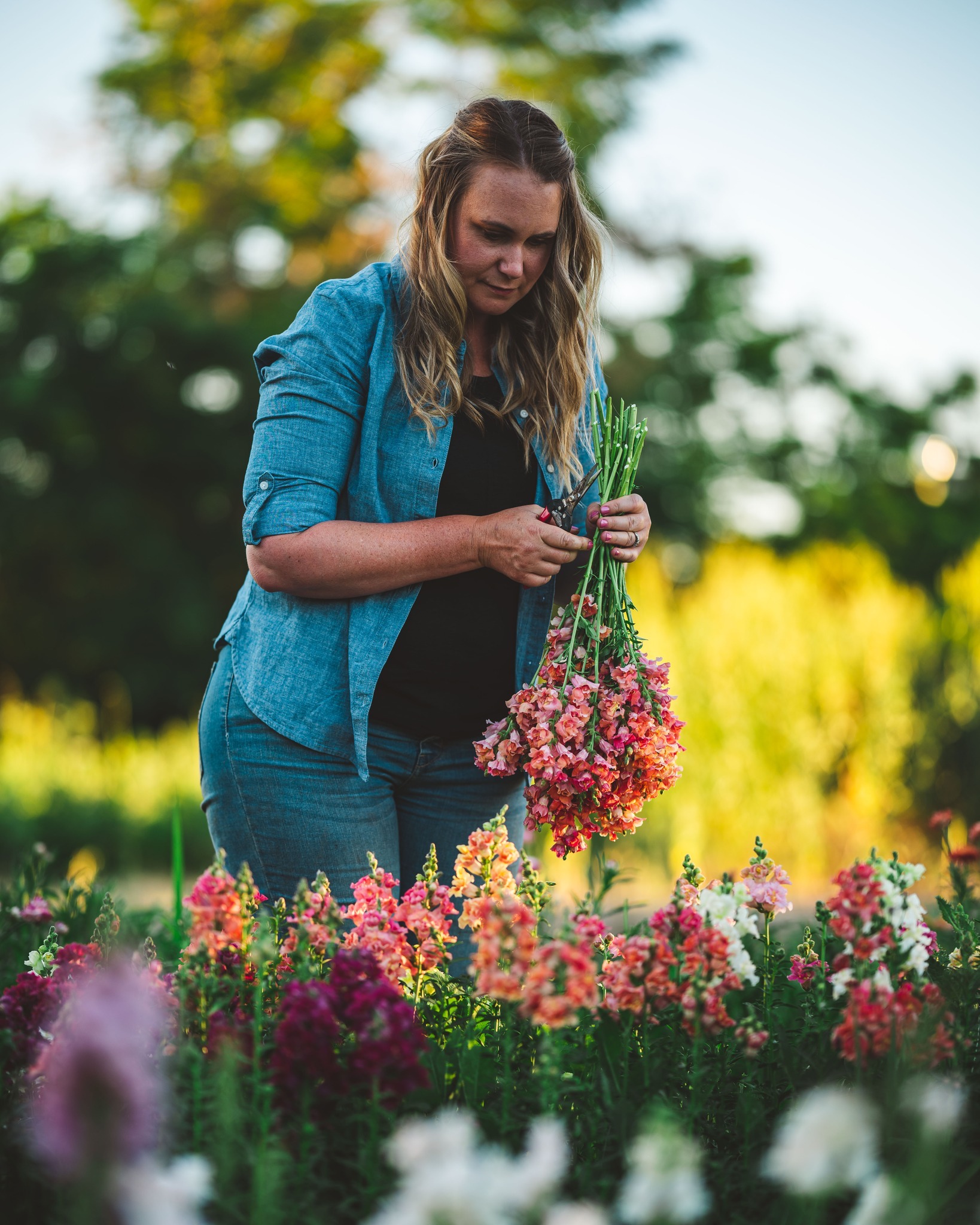
source@sierraflowerfarm
Companion planting is a technique that involves pairing flowers that work well together, promoting healthier growth and pest control. Certain flowers, like marigolds, are known to repel harmful insects, while others, like sunflowers, provide shade and shelter for more delicate plants. By strategically planting flowers that complement each other, you can create a harmonious garden where plants support each other’s growth. For example, planting lavender next to roses can deter pests while enhancing the scent of the roses. Companion planting is not only practical for keeping pests at bay, but it also helps to create a lush, vibrant environment for your cut flowers to thrive in.
8. Design a Garden Path for Easy Access
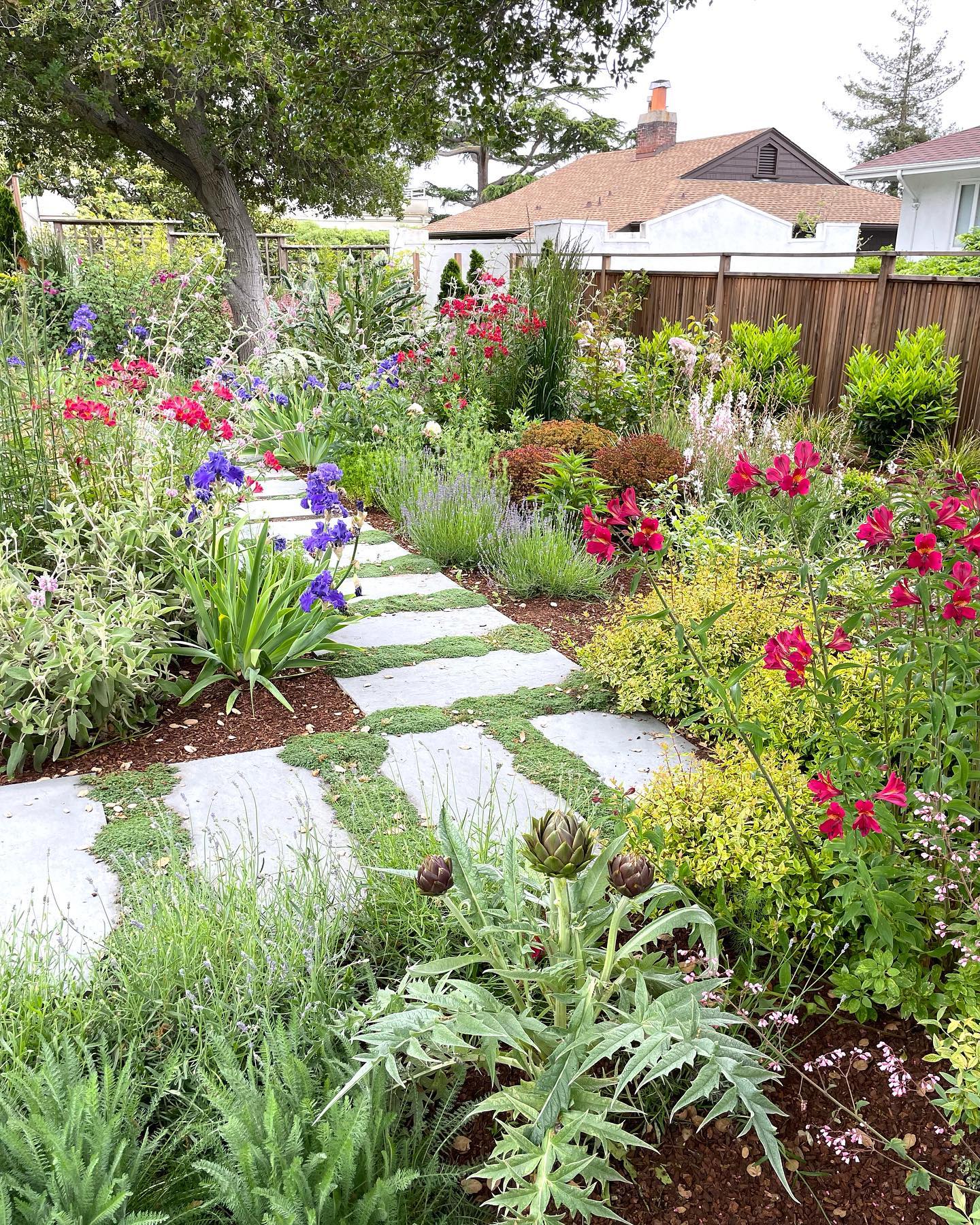
source@pinehouseediblegardens
A well-designed path through your cut flower garden will not only improve accessibility but also add a visual element to the layout. Paths can be made from gravel, stepping stones, or even bricks, and they create an inviting way to walk through your garden. A path allows you to get to your flowers easily without trampling on them, ensuring that your blooms stay healthy and beautiful. It also provides an opportunity to frame your flower beds, creating a sense of organization and structure. As you move through the garden, the path can lead you to various sections, offering a pleasant stroll where you can admire and harvest your flowers along the way.
9. Incorporate Edging for a Defined Look

source@bricksnblooms
Edging your flower beds with materials like stone, brick, or metal gives your garden a sharp, clean look and helps to define the boundaries of your cut flower garden. Edging serves a practical purpose by keeping weeds and grass out of your flower beds, while also helping to contain the soil and prevent erosion. Whether you go for a classic brick edge, a rustic stone border, or a more modern metal option, edging adds a polished, tidy look to your garden. This simple step can elevate the overall aesthetic of your flower garden and make it look professionally designed.
10. Select Flowers for Every Season
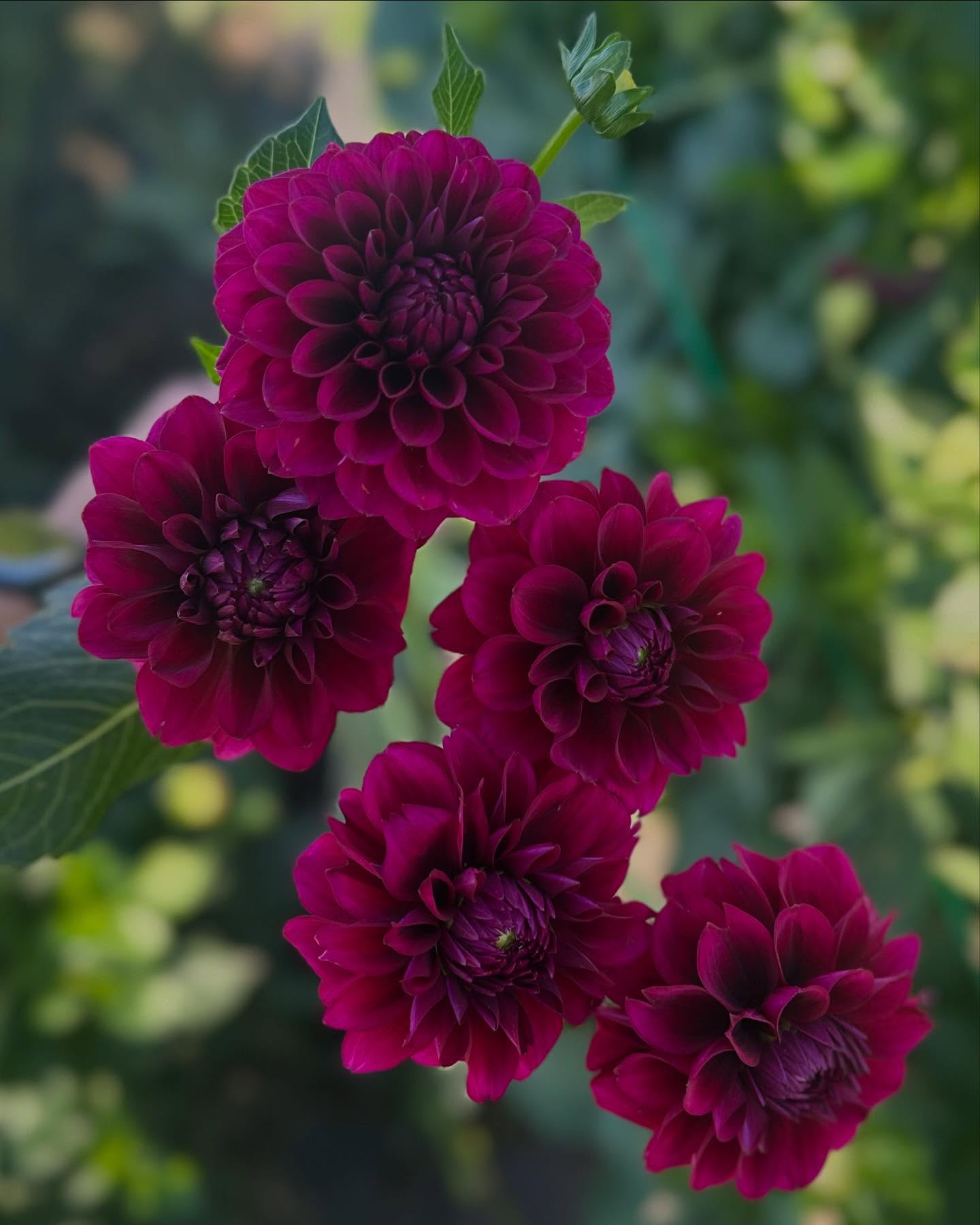
source@sarahscutflowers
Planning for year-round blooms is a key component of a successful cut flower garden. To achieve continuous color, select flowers that bloom in different seasons. For example, early-blooming tulips and daffodils can be followed by mid-summer zinnias and sunflowers, while late-season chrysanthemums and asters will keep your garden looking fresh well into the fall. With the right selection of flowers, you can ensure that you’ll have fresh, cut blooms for arrangements at any time of year. Including flowers that bloom at different times also keeps your garden looking full and vibrant, no matter the season.
11. Add Foliage for Texture and Greenery
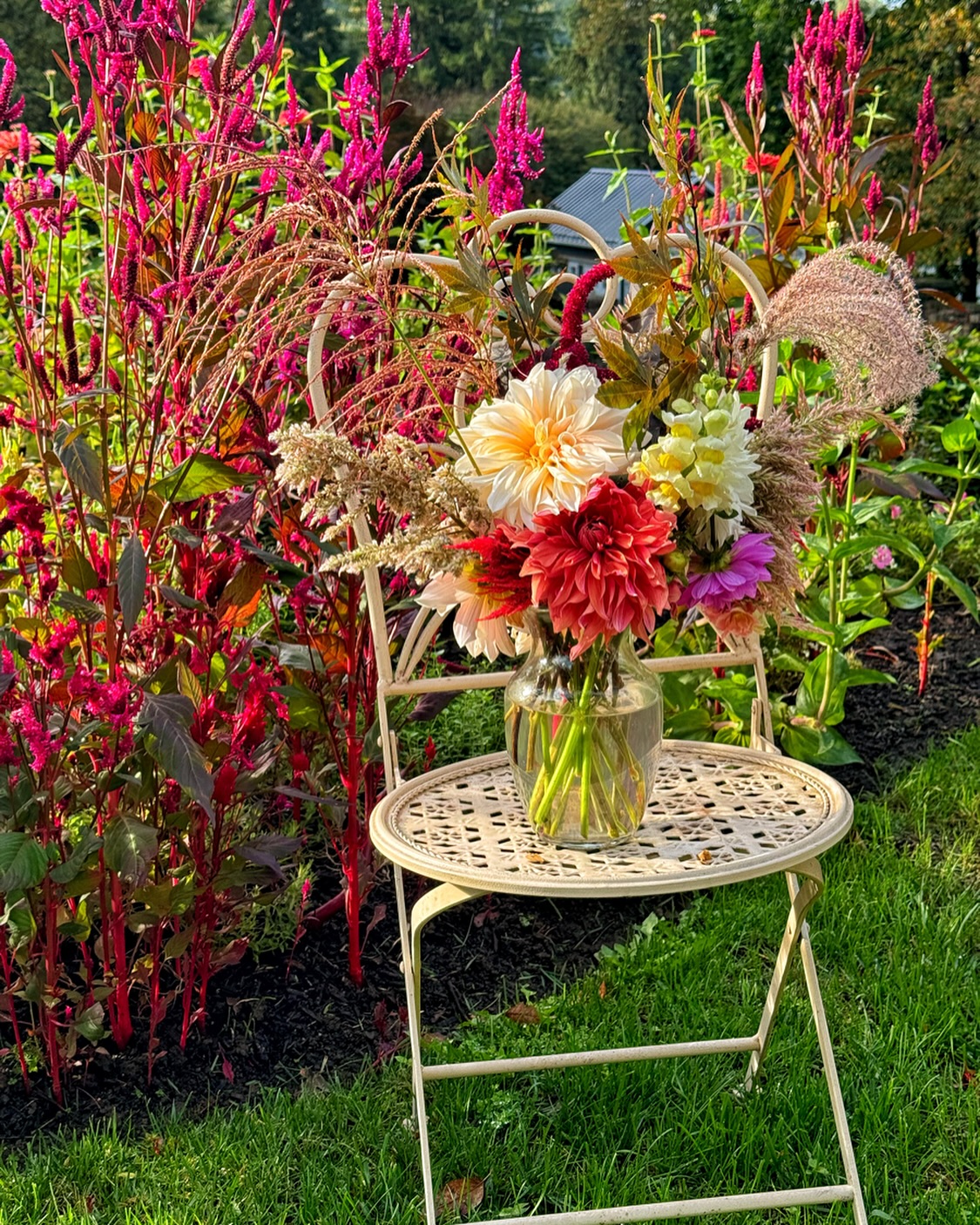
source@bricksnblooms
While flowers are the stars of the show, incorporating foliage into your garden layout is essential for creating a lush, vibrant space. Foliage adds texture, depth, and contrast to your flower beds, making the blooms pop. Consider adding plants like ferns, hostas, or ornamental grasses to your garden design. These non-flowering plants help to fill in gaps and create visual interest, especially when flowers are in between blooms. Greenery provides a beautiful backdrop for your colorful flowers and ensures that your garden remains full of life, even when some flowers aren’t in bloom.
12. Consider Height Differences for Visual Appeal
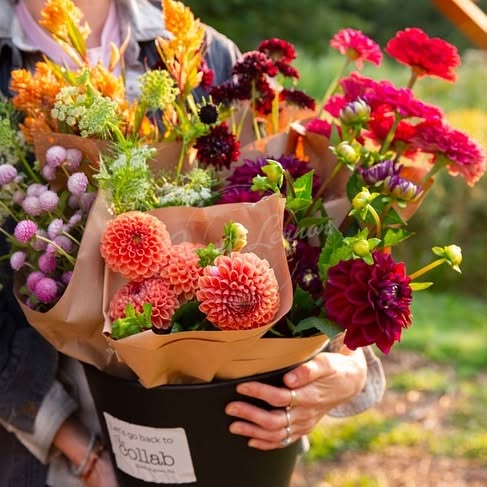
source@thecutflowercollab
One of the best ways to create a visually dynamic flower garden is by incorporating height differences. Plant taller flowers like sunflowers, hollyhocks, or delphiniums in the back of your garden or along the perimeter, with medium-height flowers like lavender, coneflowers, and daisies in the middle, and shorter flowers like pansies and marigolds in the front. This layering effect creates a beautiful, tiered garden that draws the eye up and around, allowing you to see the entire space. By mixing flowers of varying heights, you add visual interest and depth to your garden while making sure each flower has enough space to grow properly.
13. Design for Fragrance and Visual Appeal
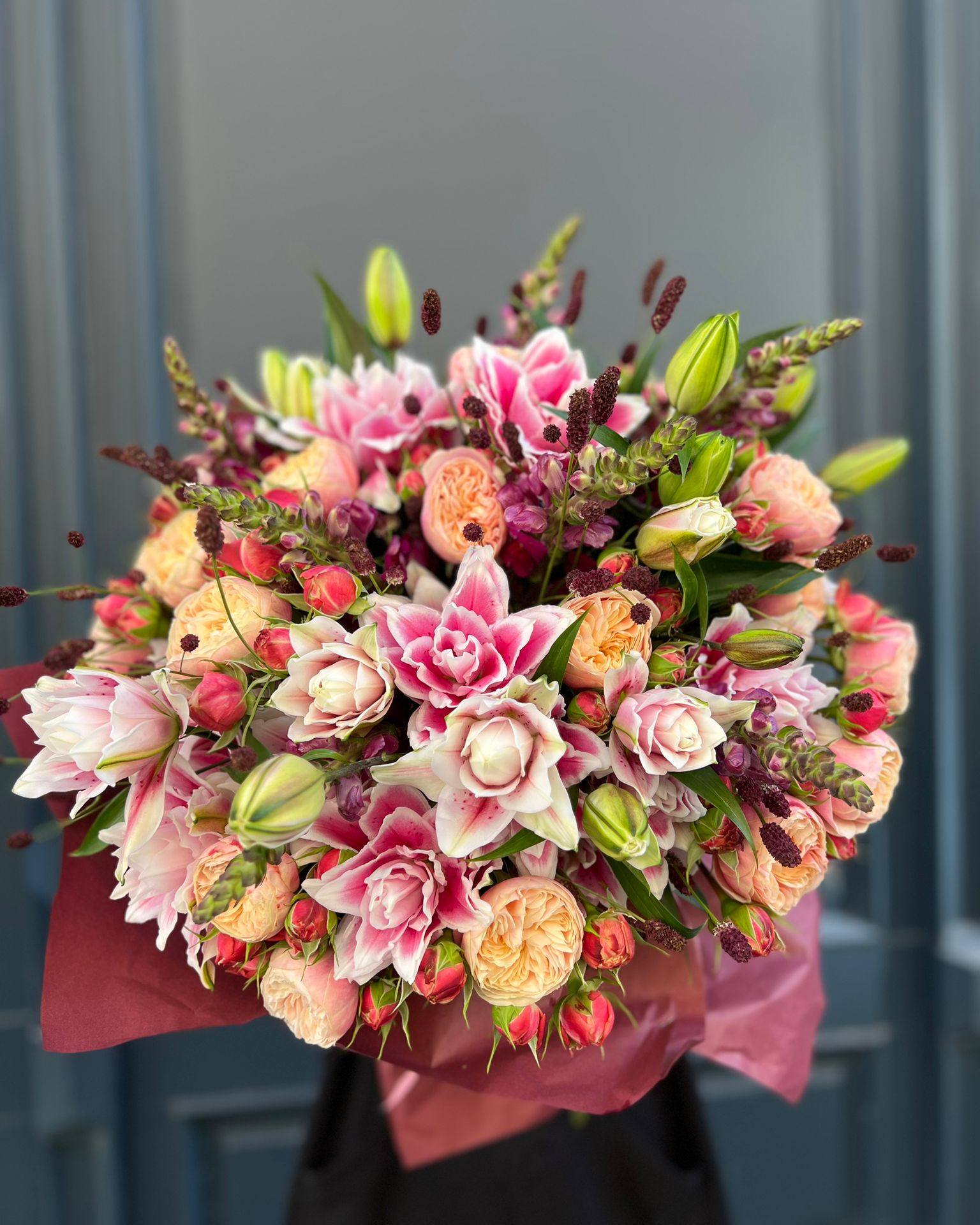
source@roselily_official
A flower garden isn’t just about how it looks—it’s also about how it smells. Adding fragrant flowers like lavender, roses, or sweet peas will create a sensory experience that elevates your garden to the next level. Fragrant flowers can also attract pollinators, such as bees and butterflies, which help your garden thrive. When designing your cut flower garden, think about placing fragrant flowers near walkways, patios, or windows so you can enjoy their scent while relaxing outside. The combination of visual beauty and delightful fragrance will make your garden an inviting retreat for all your senses.
14. Create a Cutting Area for Easy Harvesting
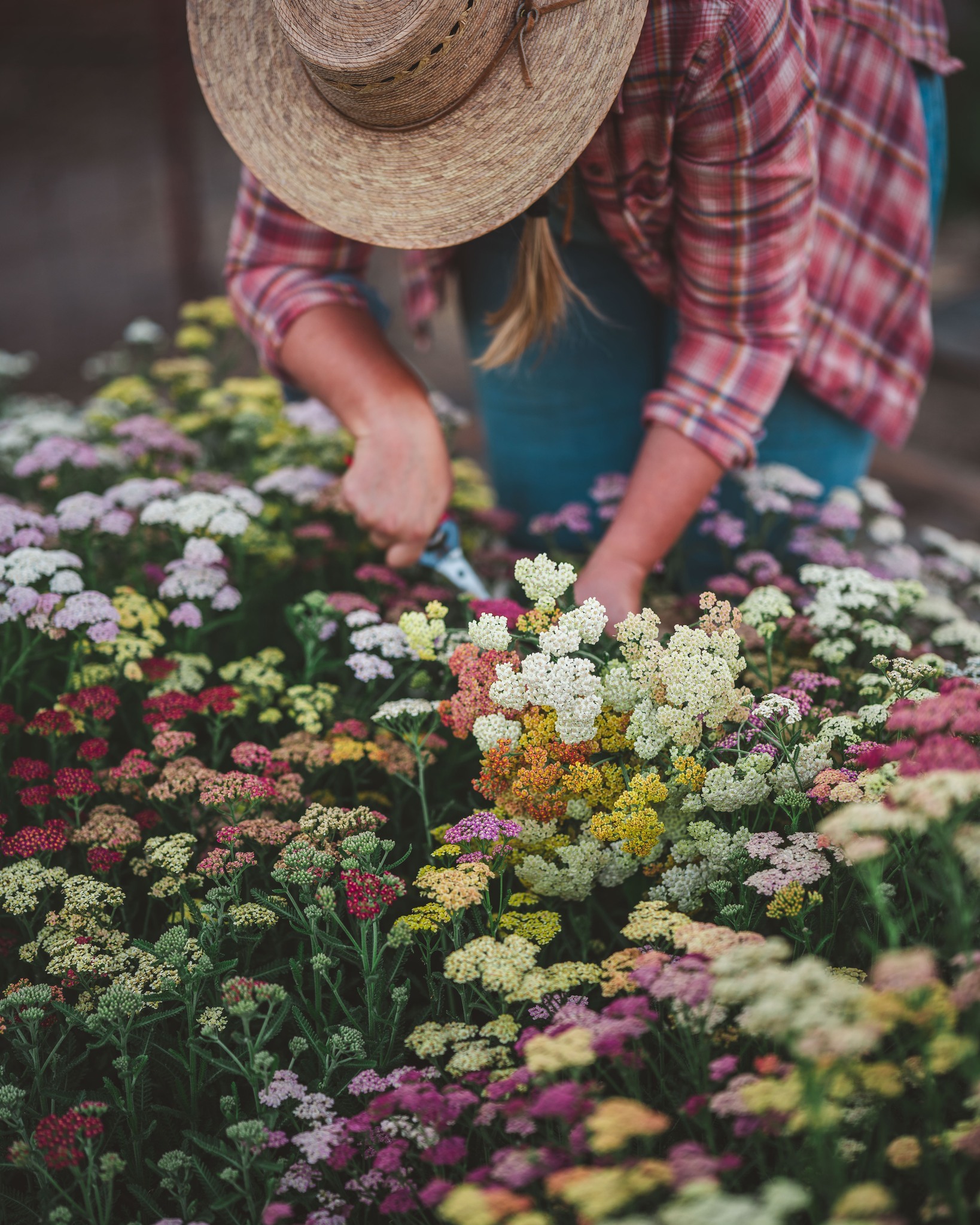
source@sierraflowerfarm
If you plan to regularly cut flowers from your garden for arrangements, it’s helpful to designate a specific cutting area. This could be a small section of the garden where flowers are spaced out and ready to be harvested. Having a designated cutting area ensures that you don’t disturb the rest of the garden and allows for more efficient harvesting. You can also keep your cut flowers in water nearby to prevent wilting while you continue gathering blooms. A well-organized cutting zone not only makes it easier to harvest your flowers but also helps you keep your garden tidy.
15. Use Container Gardening for Flexibility
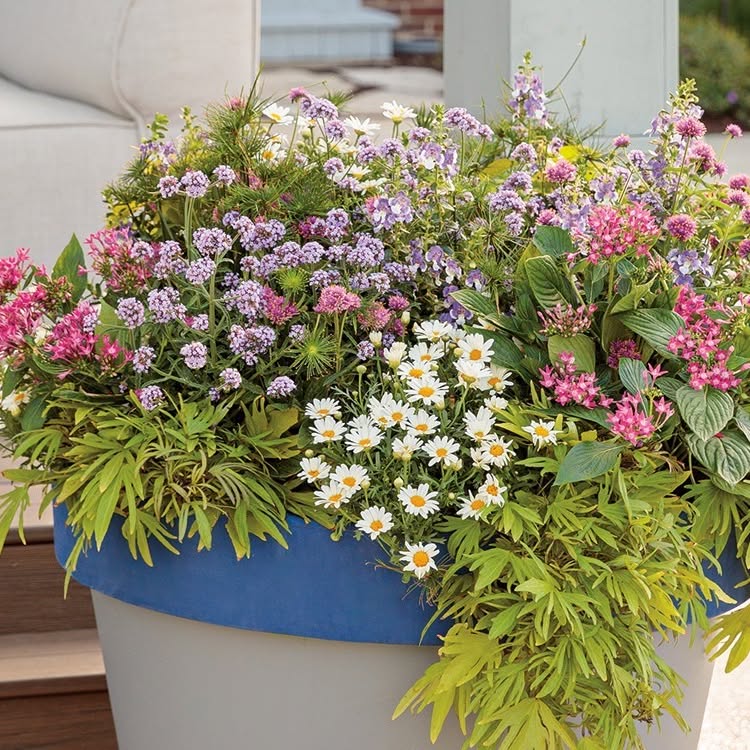
source@provenwinners
Container gardening is perfect for those who want to add flexibility to their cut flower garden. With pots, you can grow flowers anywhere, even on a small patio or balcony. Container gardening also allows you to move plants around to get the best sunlight or to adjust the layout of your garden whenever you wish. You can use a variety of containers—clay pots, hanging baskets, or even old wooden crates—and plant flowers like geraniums, petunias, and marigolds for easy, portable blooms. Container gardening allows you to adapt your garden as needed while still enjoying the beauty of fresh-cut flowers.
16. Utilize Garden Beds with Built-In Irrigation
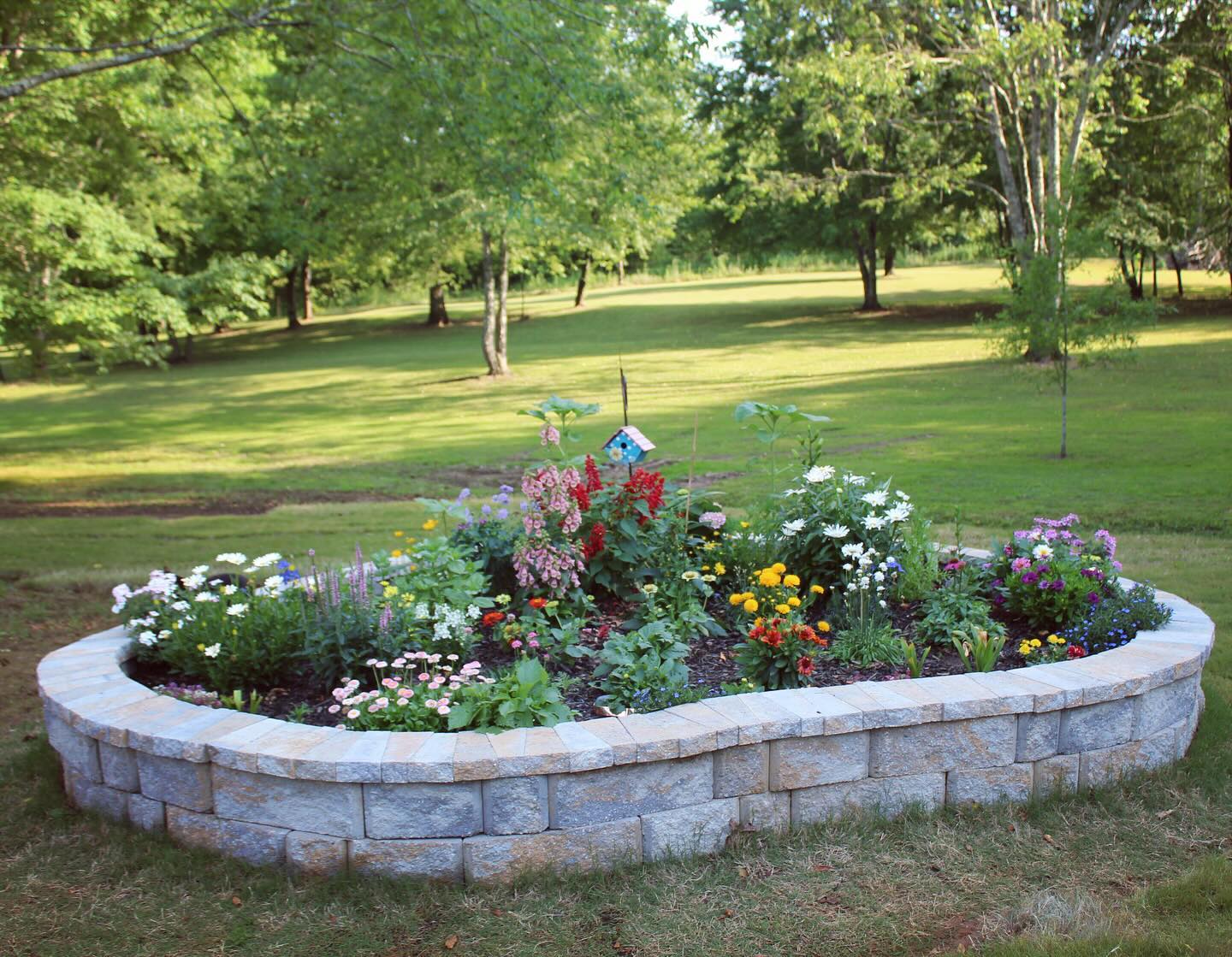
source@flower_chick_farm
Maintaining the right moisture level in your garden is crucial for healthy flower growth. By investing in garden beds that have built-in irrigation systems, or setting up a drip irrigation system yourself, you can ensure your flowers receive consistent watering. These systems are efficient, conserve water, and prevent over-watering or underwatering, both of which can lead to poor flower health. Automatic irrigation also reduces the amount of time you need to spend watering your flowers, freeing you up to enjoy the fruits of your labor without worrying about their hydration.
17. Maximize Space with Succession Planting
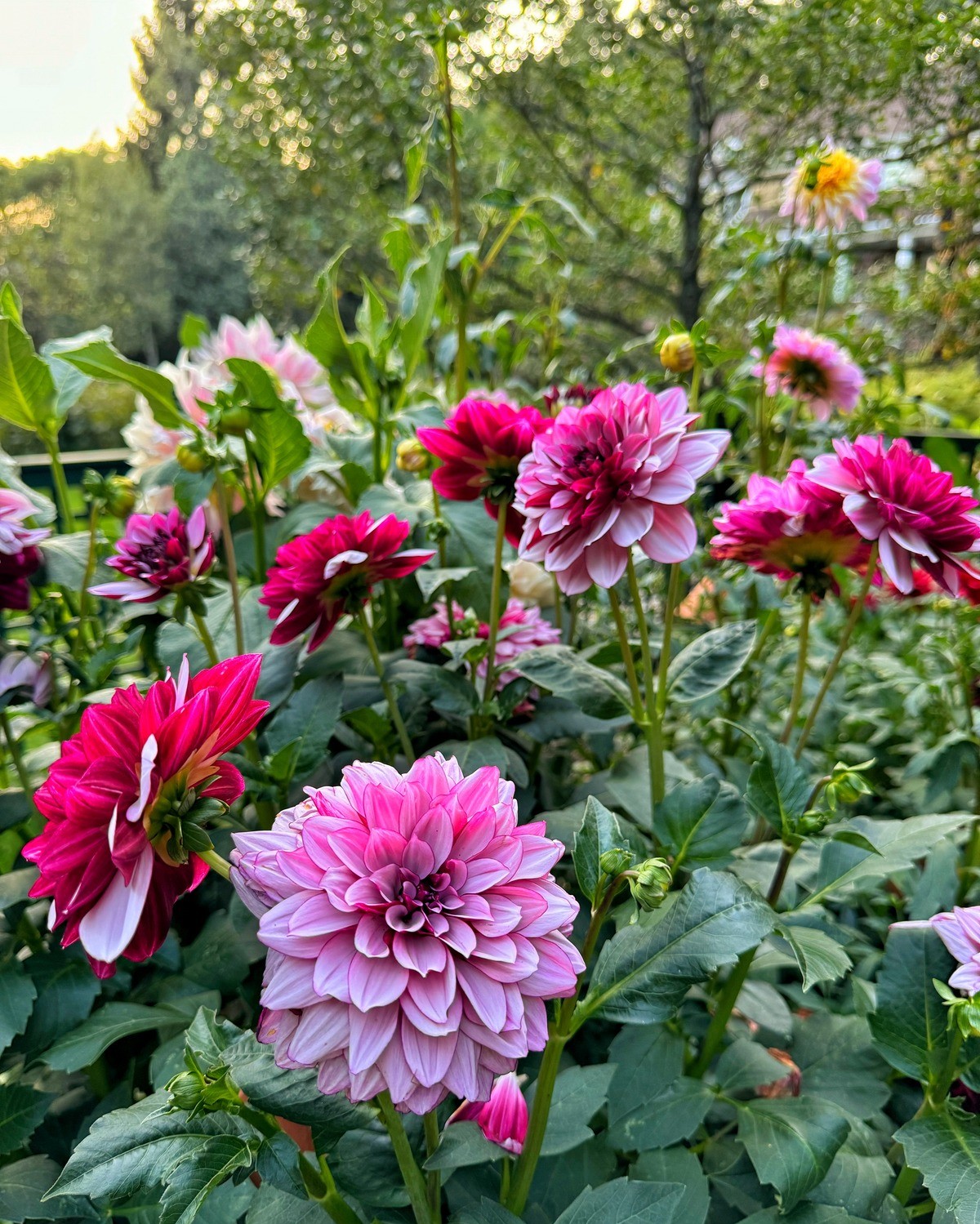
source@bricksnblooms
Succession planting is a technique that involves planting flowers at different intervals throughout the growing season. By staggering your planting times, you ensure that as some flowers fade, others are ready to bloom. This technique keeps your garden in full bloom for a longer period, providing you with a continuous supply of cut flowers throughout the season. Whether you’re planting annuals or perennials, succession planting ensures that there’s always something to harvest and enjoy in your cut flower garden.
18. Incorporate Flowers That Attract Pollinators
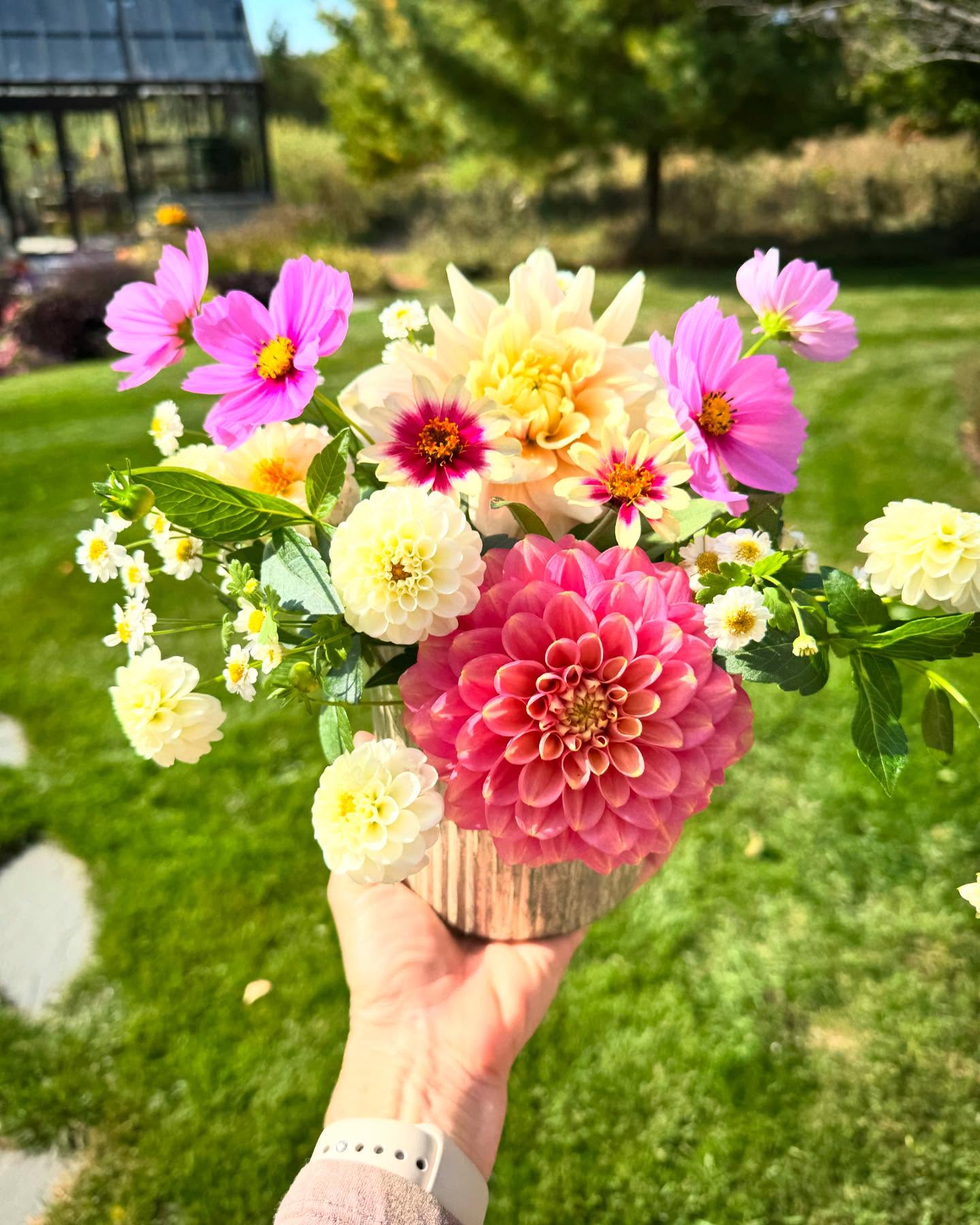
source@seasonaldesignsbydawn
Pollinators like bees, butterflies, and hummingbirds play an essential role in the success of your flower garden. By planting flowers that attract these creatures, you’ll create a thriving ecosystem that supports the health of your flowers and other garden plants. Flowers like lavender, bee balm, and coneflowers are known for attracting pollinators and ensuring that your garden stays vibrant and healthy. These natural helpers will also assist in the production of more flowers, ensuring that your garden continues to provide beautiful blooms throughout the season.
19. Add a Water Feature for Serenity
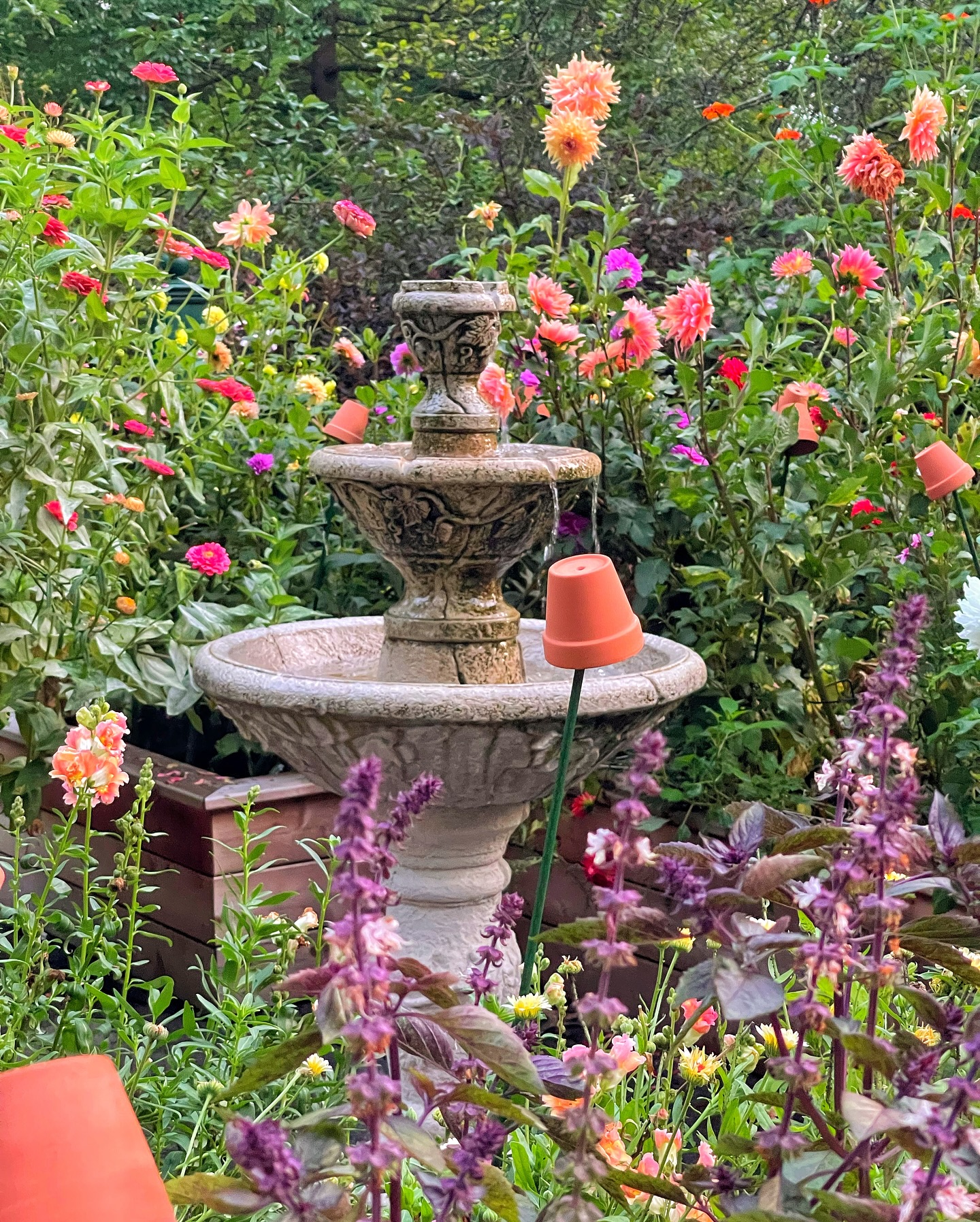
source@bricksnblooms
A small water feature, like a fountain or pond, can add both visual appeal and tranquility to your garden. The sound of running water enhances the serene atmosphere, and the reflection of your flowers in the water creates a stunning visual effect. A water feature can also attract wildlife, including birds and insects, adding to the natural beauty of your garden. Placing a water feature near your flower beds offers a peaceful retreat where you can sit and enjoy the beauty

